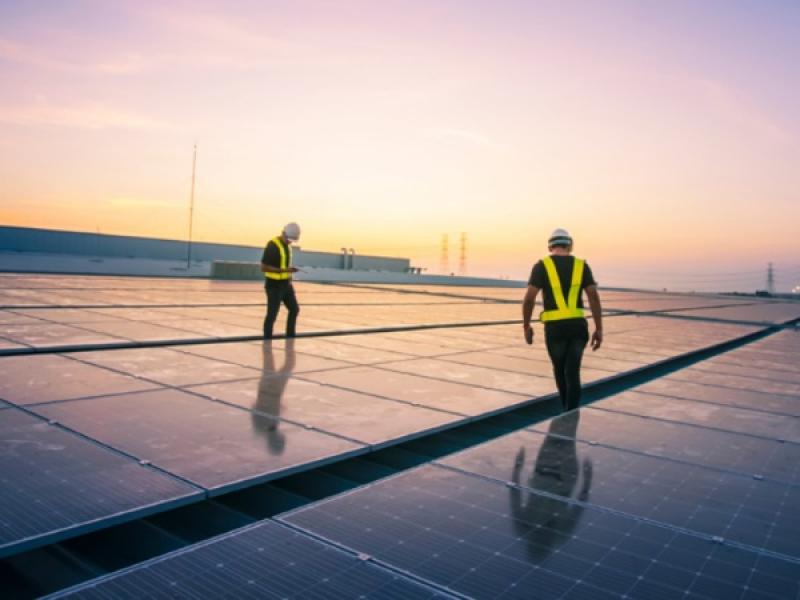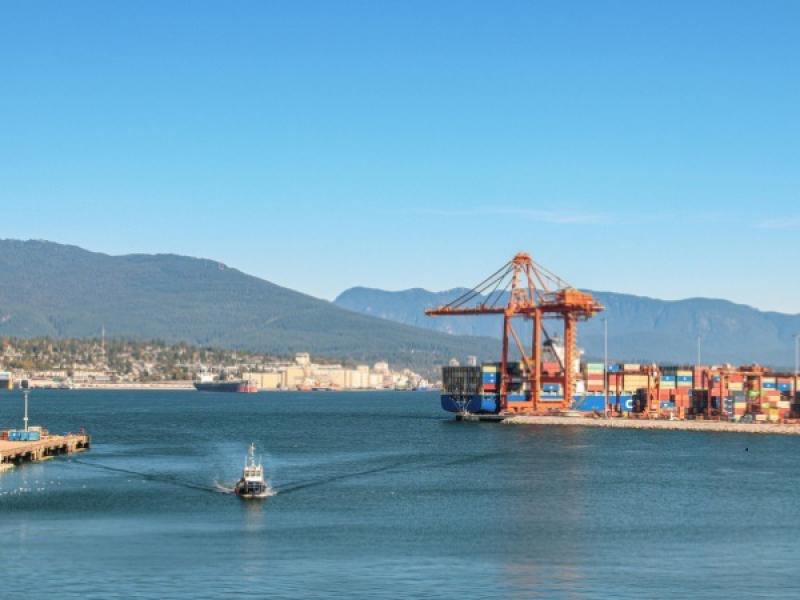
The Canadian government can stimulate economic growth and advance its climate goals by removing regulatory barriers, linking the country’s infrastructure and supporting investment into domestic markets, a clean energy industry association says.
The Vancouver-based One Canadian Clean Economy Task Force, whose members represent companies from sectors such as renewable energy, critical minerals, batteries and low-carbon buildings, unveiled 30 recommendations in a report titled Our North Star Action Plan.
It says the suggestions can help protect Canada's economy from the “trade and tariff shocks of today” while preparing the country to reap a “massive economic advantage” from the clean energy transition.
With momentum toward policies such as removing provincial trade barriers and prioritizing nation-building projects, “there’s actually a lot of alignment around the importance of the clean economy,” Rachel Doran, executive director of Vancouver-based Clean Energy Canada, said in an interview with Sustainable Biz Canada.
The think tank is one of nine organizations that make up the One Canadian Clean Economy Task Force. Other members include: the Canadian Renewable Energy Association, Electric Mobility Canada, Electricity Human Resources Canada, the Canada Cleantech Alliance, the Battery Metals Association of Canada, Efficiency Canada and the Forest Products Association of Canada.
Tearing down barriers
The report was published a day before Prime Minister Mark Carney unveiled the proposed federal budget with a “climate competitiveness strategy.” It includes an updated carbon pricing policy, support for a clean electricity investment tax credit, and a signalling of the intent to end the oil and gas emissions cap.
“We’re trying to draw attention to how important and exciting the clean economy is as the government’s thinking about its first big nation-building budget,” Doran said.
A key suggestion in the report is removing red tape around Canada’s project development regulations, a goal Carney has also emphasized. Examples include:
- identifying where provincial and federal regulations overlap to avoid duplication;
- establishing mandatory turnaround times for project authorizations; and
- the federal government prioritizing clean growth projects and trade-enabling infrastructure when selecting projects.
While accelerating project development is key to Canada’s economic competitiveness, it cannot be done “by cutting corners on Indigenous rights, reconciliation, strong environmental standards,” Doran said. Thus, the report also recommends supporting the “meaningful engagement, equity participation, and rights of (the) impacted Indigenous nation.”
The task force also urges barriers around labour mobility – how easily workers can move between trades and the provinces and territories – be reduced. One possibility is to focus on clean economy trades and professions in provincial mutual recognition laws.
While work is underway to address labour mobility for established professionals, there has been less attention for apprentices, Doran said. A step to address this would be updating laws to better align apprenticeship requirements across the provinces.
More funds should be poured into education and training programs to keep up with the labour needs for the installation of clean energy equipment such as solar panels, and te manufacturing of electric vehicles, the task force adds.
Interprovincial trade barriers can be reduced with steps such as updating the mandate of Export Development Canada to support investment in domestic infrastructure and liquidity for Canadian companies, the report says.
Linking Canada’s regulations, infrastructure

Harmonizing Canada’s building codes around the low-carbon economy emerged as a key consideration in the report.
Policies such as whether new buildings should include electric vehicle charging capability, or adhere to embodied carbon requirements, are harder to roll out nationwide when “it’s happening across 13 jurisdictions with a patchwork of regulation and rules,” Doran said.
Bringing provincial building and construction codes into alignment will make it cheaper and easier to build cleanly across Canada, the report says, creating “a more compelling marketplace for low-carbon materials and technology while supporting domestic innovation.”
For transportation infrastructure, the task force urges investment into roads and ports that can accommodate the movement of batteries and wind turbine blades across the country.
To make use of Canada’s mostly clean electricity, the report says Canadian provinces should play a part in a national grid initiative to identify and expedite transmission projects that support sovereignty and grid reliability.
Canada’s public procurement rules should prioritize low-carbon Canadian materials and technologies, and the federal government can stimulate the flow of capital into the clean economy, the task force suggests.
Some of the recommendations are easy to act on today, Doran said, such as the federal government prioritizing funding for clean energy within Canada’s electricity system.
The One Canadian Clean Economy Task Force is open to deciding the next steps needed to get its recommendations initiated by governments, she added.










